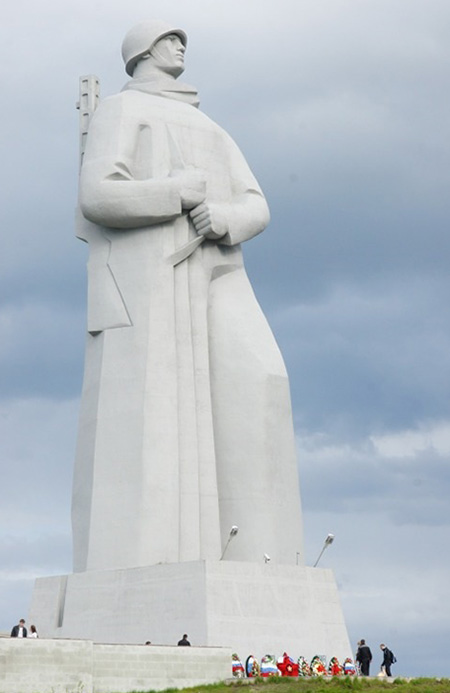|
In Murmansk the war began on June 29, 1941. Active military operations in the North began a week later than in other front parts. Operation to capture Murmansk and Polyarny (with the subsequent capture of Arkhangelsk), the Germans called Silver Fox. Fascists were particularly interested in the number of neither their ships, nor ours. Just like on the Baltic and the Black Sea, they hoped to take our bases on the Barents Sea from the land. And also with lightning speed. As elsewhere at the Soviet-German front, fighting in the north immediately got hard fought performance. The Soviet soldiers and Marines responded with fierce resistance, and sustained power. The residents in Germany in those days used to the triumphant reports from the Eastern Front. But from that polar land they didn’t receive such messages. Like in the Battle of Moscow, the enemy was stopped not by the frost, or snow, not by Murmansk tundra, or hills, but by the heroism of the Soviet people. Having a lot of bombers, the Germans fiercely bombed our positions before the attack. In those difficult times fighter jets flew to help the infantry. September 15, is a particularly memorable day for Nazi pilots. In the morning seven Safonov’s fighter planes led a large group of the enemy bombers turn back and drop bombs on their positions. Navy was also involved in the reflection of the offensive of the Nazis inland. Thousands of volunteers went into the Marines. Ships with their anti-aircraft artillery defended Murmansk from the aircraft. At the time, naval patrol service was not easy. They had to beat off aircraft attacks, submarines and the enemy destroyers. It took several months of fighting in the North. The Germans achieved very little. In the Murmansk region, they pushed our troops from the border to three dozen kilometers. They managed to cut off the Middle and Fish peninsulas, but they could not take them. The enemy managed to reach the railway neither on Ukhta, nor on Kandalaksha directions. In autumn 1941, the front line above the Arctic Circle was stabilized, and did not change till our offensive in 1944. In late 1944, the Northern Fleet was almost three times greater than the number of the enemy aircraft. Murmansk feat will go down in history as a symbol of our country and the unprecedented strength of mass heroism. For more information on war heroes visit Our Victory social project official website.
|

